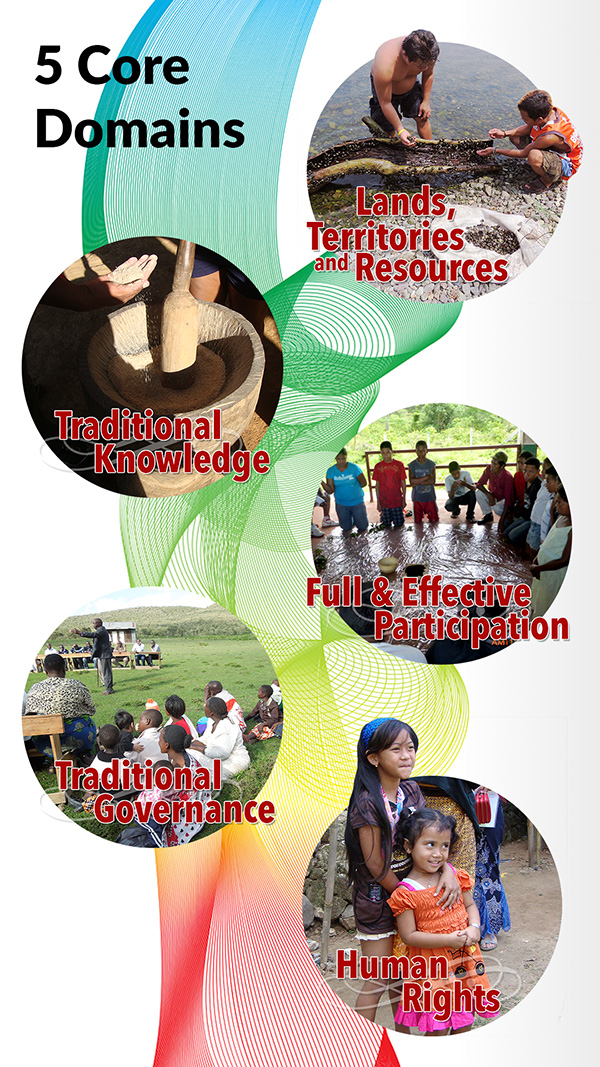Community-Based Monitoring and Information Systems (CBMIS)
a process where indigenous peoples are able to generate data and information for the analysis, monitoring, and use of the community. It is geared towards community organizing, community empowerment and the realization of indigenous peoples’ sustainable, self-determined development.

Land, Territories and Resources
To reflect Indigenous Peoples (IPs) control over their land territories and resources, recognition of IPs’ land tenure rights by the state, business sector and others. It also reflects the historical context and prevailing conflicts between customary and statutory control and ownership.
Traditional Knowledge
To reflect status and trends on the value of, innovations of, and the extent to which traditional knowledge is being utilized, recognized, respected and promoted.
Full and Effective Participation
To reflect status and trends in indigenous peoples’ level of representation and participation in decision making processes, and especially in major decision-making bodies.
Traditional Governance
To reflect status and trends in the practice, adherence to traditional governance systems by IPs and its relation to contemporary institutions and governance practices.
Human Rights
To reflect status and trends in the recognition, respect and promotion of IPs’ rights as citizens and as a special category of right-holders provided buy a number of international human rights instruments, laws, protocols and conventions including the United Nations Declaration on the Rights of Indigenous Peoples (UNDRIP).
-
Land, Territories and Resources
To reflect Indigenous Peoples (IPs) control over their land territories and resources, recognition of IPs’ land tenure rights by the state, business sector and others. It also reflects the historical context and prevailing conflicts between customary and statutory control and ownership. -
Traditional Knowledge
To reflect status and trends on the value of, innovations of, and the extent to which traditional knowledge is being utilized, recognized, respected and promoted. -
Full and Effective Participation
To reflect status and trends in indigenous peoples’ level of representation and participation in decision making processes, and especially in major decision-making bodies. -
Traditional Governance
To reflect status and trends in the practice, adherence to traditional governance systems by IPs and its relation to contemporary institutions and governance practices. -
Human Rights
To reflect status and trends in the recognition, respect and promotion of IPs’ rights as citizens and as a special category of right-holders provided buy a number of international human rights instruments, laws, protocols and conventions including the United Nations Declaration on the Rights of Indigenous Peoples (UNDRIP).




